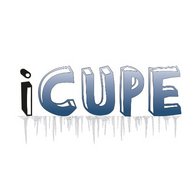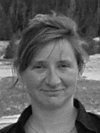Integrative and Comprehensive Understanding of Polar Environments - iCUPE
Funding by: European Union's Horizon 2020 research and innovation programme
Funding ID: Grant agreement No 689443
Project executing or management agency: EU-H2020
Project coordinator: University of Helsinki (UHEL), Tuukka Petäjä
Funding period: 01.09.2018 – 31.08.2021
Project partners: University of Helsinki (UHEL), Tuukka Petäjä (Project Coordinator) I Consiglio Nazionale delle Ricerche (CNR) I Aarhus University (AU) I Alfred Wegener Institute Helmholtz Centre for Polar and Marine Research (AWI) I Centre National de la Recherche Scientifique (CNRS) I Estonian University of Life Sciences (EULS) I Finnish Meteorological Insitute (FMI) I Helmholtz-Zentrum Geesthacht (HZG) I N.C.S.R. Demokritos, Institute of Nuclear Technology and Radiation Protection (NCSR) I Paul Scherrer Institut (PSI) I Leibniz Institute for Tropospheric Research (TROPOS) I Stockholm Universitet (SU) I ERA-PLANET — the European network for observing our changing planet
iCUPE answers to ERA-PLANET (European network for observing our changing planet) thematic strand 4 (Polar areas and natural resources). The project is motivated by the fact that the role of polar regions will increase in terms of megatrends such as globalization, new transport routes, demography and use of natural resources. These megatrends have environmental effects and will drastically affect e.g. regional and transported pollutant concentrations. As a consequence, the polar areas face interconnected grand challenges.
The vision driving iCUPE activities is that we need to establish and maintain long-term, coherent and coordinated observations and research activities on environmental quality and natural resources in polar areas. The core idea of iCUPE is the development of novel, integrated, quality-controlled and harmonized in-situ observations and satellite data in the polar areas, as well as data products to the end users. iCUPE combines integrated in-situ and satellite Earth Observation with a modelling platform. By doing this it
- synthesizes data from comprehensive long-term measurements, intensive campaigns and satellites, collected during the project or provided by on-going international initiatives
- relates the observed parameters to impacts, and
- delivers novel data products, metrics and indicators to the stakeholders concerning the environmental status, availability and extraction of natural resources in the polar areas.
These data, metrics and indicators will be targeted to identified stakeholders. They will be useful for policy development and for improving and clearly communicating our multidisciplinary understanding of status of the polar environment and pollution dynamics in the future. The knowledge generated is relevant to the general population, policy makers and scientists.
GFZ contributes in WP1: ground-based components for short-lived climate forcers, and WP3: Satellite remote sensing of Arctic surfaces, to the aspects of
- Monitoring methane release from tundra permafrost Prof. Dr. Torsten Sachs
- Advanced remote sensing of Arctic vegetation status Dr. Alison Beamish
- Monitoring extent and intensity of artificial light sources Dr. Christopher Kyba
For more information, please visit the iCUPE home web page.
Publications:
Beamish, A., Coops, N. C., Hermosilla, T., Chabrillat, S., Heim, B. 2018 - Monitoring pigment‐driven vegetation changes in a low‐Arctic tundra ecosystem using digital cameras- DOI
Beamish, A., Coops, N. C., Chabrillat, S., Heim, B. 2017 - A phenological approach to spectral differentiation of low-arctic tundra vegetation communities, North Slope, Alaska - DOI
Conference presentations:
Influence of litter and non-vascular components on the spatial aggregation of hyperspectral data in a low-Arctic ecosystem
Beamish, A., Brell, M., Chabrillat, S., Coops, N. and Heim, B. 2018
15th International Circumpolar Remote Sensing Symposium, September 10-14 2018, Potsdam, Germany
Using visible and near-infrared spectral reflectance to estimate tundra vegetation biodiversity, Qikiqtaruk – Herschel Island, Canada
Beamish, A., Daskalova, G., Myers-Smith, I., Heim, B. and Chabrillat, S. 2018
Arctic Change ASM, December 10-14 2018, Ottawa, Ontario, Canada




